 | TODAY IN SCIENCE HISTORY NEWSLETTER - 1 MAY |
| Feature for Today |
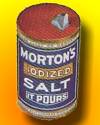 On 1 May 1924, the first iodized table salt in the U.S. went on sale at grocers in Michigan state. The table salt contained 0.01% sodium iodide as a dietary supplement, since an adequate intake of iodine reduces the incidence of goitre (a major swelling of the thyroid gland in the neck.) On 1 May 1924, the first iodized table salt in the U.S. went on sale at grocers in Michigan state. The table salt contained 0.01% sodium iodide as a dietary supplement, since an adequate intake of iodine reduces the incidence of goitre (a major swelling of the thyroid gland in the neck.)What we take for granted when buying salt at the supermarket nowadays was a major step forward in public health compared to a century ago in the U.S. For a short outline about how the use of iodine supplement was researched, and how significant it was, read Goiter Prevention from Minnesota Medicine (1922). You'll learn the names of some scientists that you probably have never heard of, but the importance of their work has lasted to the present day, since it has been essential for a healthy population. |
| Book of the Day | |
| |
| Quotations for Today | |
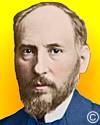 | "In the study of this membrane [the retina] I for the first time felt my faith in Darwinism (hypothesis of natural selection) weakened, being amazed and confounded by the supreme constructive ingenuity revealed not only in the retina and in the dioptric apparatus of the vertebrates but even in the meanest insect eye. ... I felt more profoundly than in any other subject of study the shuddering sensation of the unfathomable mystery of life." |
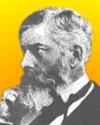 | "Not one of them [formulae] can be shown to have any existence, so that the formula of one of the simplest of organic bodies is confused by the introduction of unexplained symbols for imaginary differences in the mode of combination of its elements... It would be just as reasonable to describe an oak tree as composed of blocks and chips and shavings to which it may be reduced by the hatchet, as by Dr Kolbe's formula to describe acetic acid as containing the products which may be obtained from it by destructive influences. A Kolbe botanist would say that half the chips are united with some of the blocks by the force parenthesis; the other half joined to this group in a different way, described by a buckle; shavings stuck on to these in a third manner, comma; and finally, a compound of shavings and blocks united together by a fourth force, juxtaposition, is joined to the main body by a fifth force, full stop." |
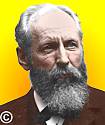 | "Knowledge of Nature is an account at bank, where each dividend is added to the principal and the interest is ever compounded; and hence it is that human progress, founded on natural knowledge, advances with ever increasing speed." |
| QUIZ | |
| Before you look at today's web page, see if you can answer some of these questions about the events that happened on this day. Some of the names are very familiar. Others will likely stump you. Tickle your curiosity with these questions, then check your answers on today's web page. | |
| Births | |
| |  Today is the birthday of an American astronaut and aquanaut, born in 1925. He was not only one of the original seven Mercury astronauts to be one of the first humans in space (1962), but three years later, he was one of the first humans to live under the ocean in Sealab II. Today is the birthday of an American astronaut and aquanaut, born in 1925. He was not only one of the original seven Mercury astronauts to be one of the first humans in space (1962), but three years later, he was one of the first humans to live under the ocean in Sealab II. Can you name him? Can you name him? |
| Deaths | |
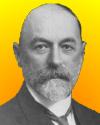 |  Herman Frasch was a German-born American petroleum scientist who died 1 May 1914. He is now best known for the efficient process he patented in 1891. It involved drilling into the ground and melting. Yes, melting - so it wasn't designed to pump petroleum from the ground, but something else. It uses three concentric pipes in the bore hole. What was the product? In one purified form it's yellow. Herman Frasch was a German-born American petroleum scientist who died 1 May 1914. He is now best known for the efficient process he patented in 1891. It involved drilling into the ground and melting. Yes, melting - so it wasn't designed to pump petroleum from the ground, but something else. It uses three concentric pipes in the bore hole. What was the product? In one purified form it's yellow.  Can you name the product? Can you name the product? |
| |  Describing blood coagulation and isolating fibrinogen, the key protein in that process, are this British anatomist's claim to fame. He figured all this out before he died 1 May 1774. Describing blood coagulation and isolating fibrinogen, the key protein in that process, are this British anatomist's claim to fame. He figured all this out before he died 1 May 1774.  Can you name him? Can you name him? |
| Events | |
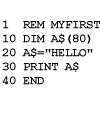 |  Programs are so basic to the operation of computers, that you should know the name of this beginner's new computer language that ran its first program on 1 May 1964 at Dartmouth University. Programs are so basic to the operation of computers, that you should know the name of this beginner's new computer language that ran its first program on 1 May 1964 at Dartmouth University. Can you name the computer language? Can you name the computer language? |
 On 1 May 1935, this huge dam was finished after 4 years and 354 days. This should be easy to name. On 1 May 1935, this huge dam was finished after 4 years and 354 days. This should be easy to name. Can you name the dam? Can you name the dam? | |
 |  Just four years earlier, on 1 May 1931, another huge building project was dedicated by the U.S. President. You must know this name of this structure. It's tall. It's in New York City. Just four years earlier, on 1 May 1931, another huge building project was dedicated by the U.S. President. You must know this name of this structure. It's tall. It's in New York City.  Can you name the building? Can you name the building? |
| Answers |
When you have your answers ready to all the questions above, you'll find all the information to check them, and more, on the May 1 web page of Today in Science History. Or, try this link first for just the brief answers. Fast answers for the previous newsletter for April 30: Gene Shoemaker; Dutch; the number of chromosomes is the same in all body cells of a single species; the Kon Tiki; Erwin Schr�dinger. |
| Feedback |
 If you enjoy this newsletter, the website, or wish to offer encouragement or ideas, please send feedback by using your mail reader Reply button. If you enjoy this newsletter, the website, or wish to offer encouragement or ideas, please send feedback by using your mail reader Reply button. |
--
If you do not want to receive any more newsletters, Unsubscribe
To update your preferences and to unsubscribe visit this link


Δεν υπάρχουν σχόλια:
Δημοσίευση σχολίου